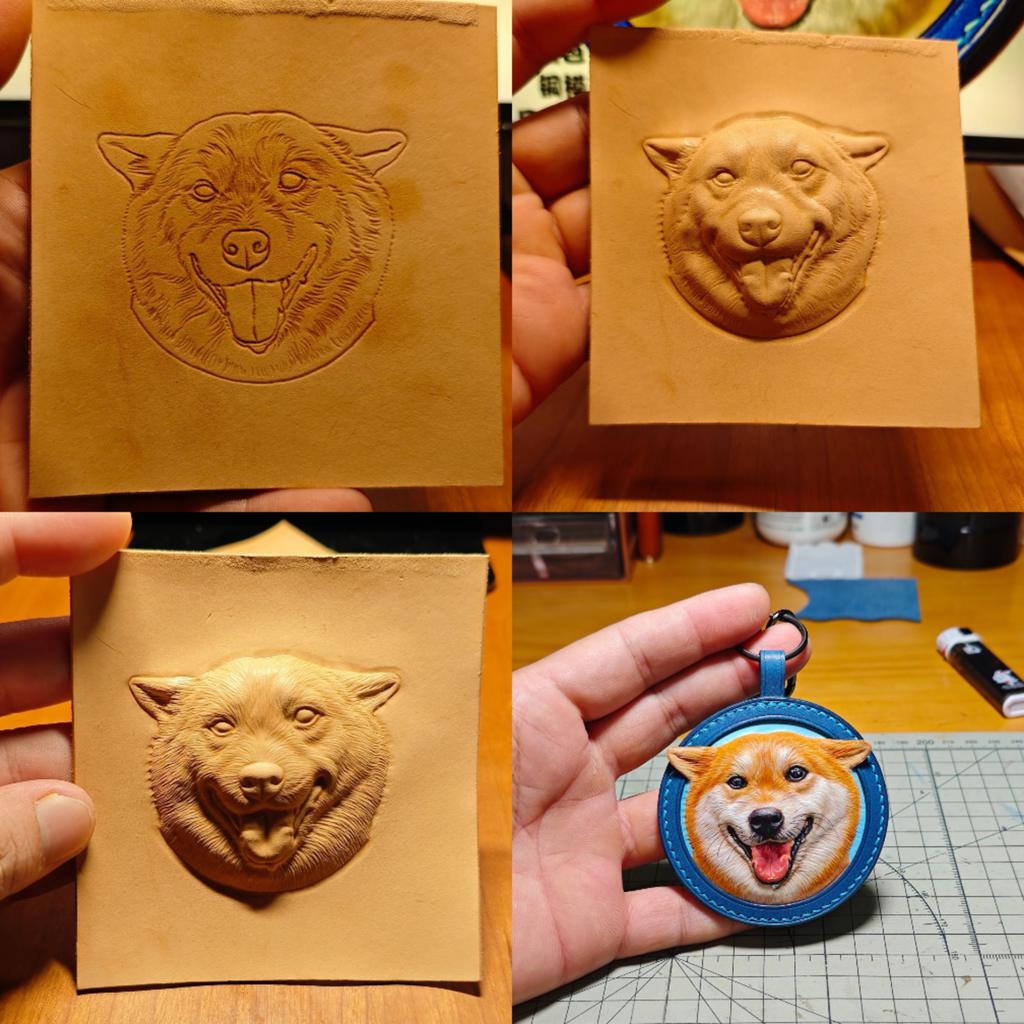It all begins with a HD photo. Artisans use a tracing needle to copy contour line of the pet onto a vegetable-tanned leather. This kind of leather is not only made in an environment-friendly way but also considered higher-quality and will last longer than synthetically treated leather. At a gentle touch or a simple glance, it can provide a luxury feel.
Based on the contour line, artisans carefully poke the leather upward from the back to make a bulge shape. The concave space behind is then filled with a mixture of hide powder, water and glue to ensure a long lasting 3D pattern. It will take some time for the mixture to solidify.
Subsequently, artisans start the engraving process, carving the features of a pet’s face into leather canvas. Every detail, from the shimmer in a cat’s eye to the texture of a dog’s fur, is brought out with painstaking precision. Hours or even days will have passed before they can finish this process.
The next step is coloring. This stage requires incredible skill and patience, as artisans carefully mix dyes to replicate the exact shades of your pet’s fur, feathers, or scales. Dyes have to be coated layer by layer delicately to turn color scheme into reality. There are a variety of dyes to choose from – water paints, alcohol stains, oil pigments and acrylic pigments. This is one of the most challenging parts, a small mistake could mean they have to start all over again. If handled properly, there will be vibrant, lifelike results, and the colors will not fade easily because the specific dyes can permeate deeply into the leather and maintain well themselves.
The final step involves finishing touches like cutting out the shapes, edge oiling, polishing, and sealing, creating a durable piece of art that will last a lifetime.

 Free shipping on orders over $300. Limited Time Only.
Free shipping on orders over $300. Limited Time Only.

